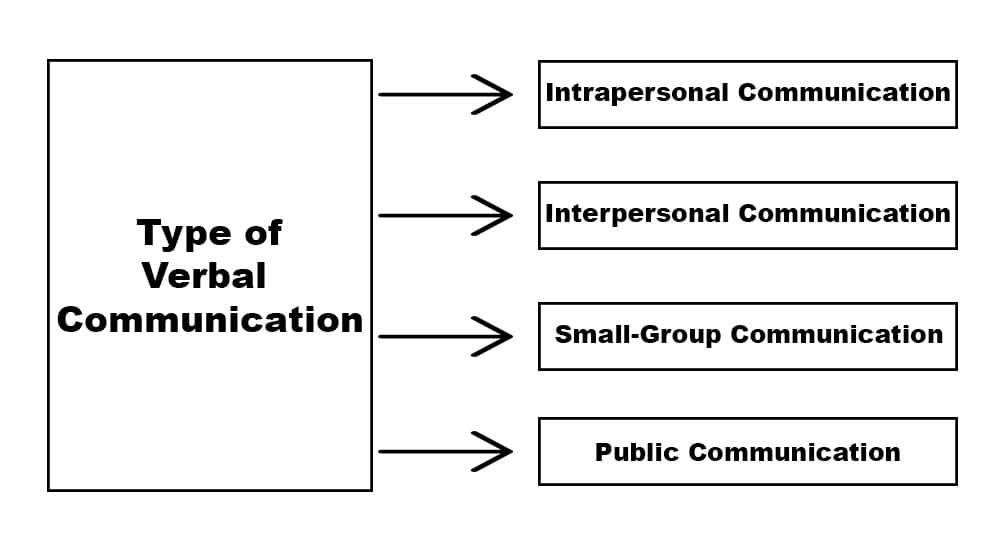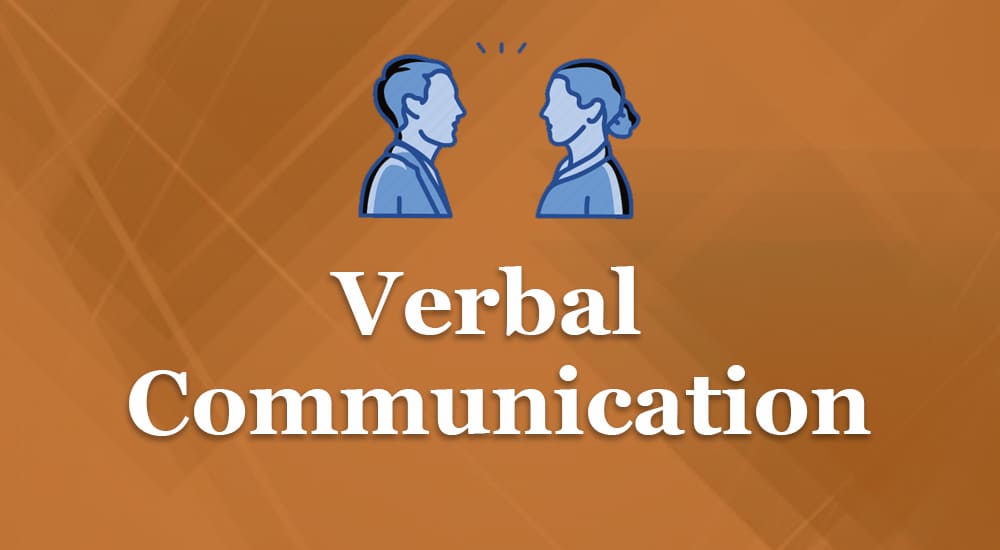People communicate with each other constantly through different modes of communication, and verbal communication is the most commonly used method of conveying a message. Whether in personal conversations, professional settings, or public speaking, how we use words dramatically impacts the effectiveness of our communication.
Effective verbal communication ensures the message is delivered and understood clearly, reducing noise and minimizing misunderstandings. Mastering this skill enhances relationships, improves teamwork, and fosters better interactions.
In today’s blog post, I will explain verbal communication and how it helps deliver messages effectively.
Let us get started.
What is Verbal Communication?
Verbal communication is the exchange of spoken words to share a message. It is a way to transfer thoughts orally. It includes speech, words, and sounds. A sender can share a message by speaking.
Verbal communication can take many forms, including one-to-one or one-to-many discussions, presentations, and public speaking.
The effectiveness of verbal communication depends on several factors. The speaker’s body language, tone, and choice of words play a significant role. A clear and confident speaker is easier to understand.
Verbal communication is primarily informal. People use it in daily conversations. In businesses, formal communication is often written. Written communication ensures clarity and record-keeping.
Verbal communication is a key skill in personal and professional life. It helps people share ideas and build relationships. Good verbal communication leads to better understanding and teamwork.
Types of Verbal Communication
Verbal communication can be divided into four main types:

1. Interpersonal Communication
This is a one-to-one communication between two individuals. One person acts as the sender, while the other is the receiver. The roles switch during the conversation as they respond to each other. Examples include face-to-face conversations, phone calls, and personal interviews.
2. Intrapersonal Communication
This type of communication occurs within oneself. It includes self-talk, thinking, reflection, and internal dialogue. Intrapersonal communication helps with decision-making, self-analysis, and problem-solving. Examples include daydreaming, journaling, and mentally preparing for a speech.
3. Small-Group Communication
When communication occurs between more than two people but remains within a limited group, it is called small-group communication. This type of communication encourages discussion, collaboration, and teamwork. Examples include team meetings, classroom discussions, brainstorming sessions, and family conversations.
4. Public Communication
This type of communication happens when one person speaks to a large audience. It aims to inform, persuade, or entertain a group of people. The speaker must be clear, confident, and engaging. Examples include election campaigns, public speeches, presentations, and seminars.
Each type of verbal communication plays a vital role in daily life, helping individuals express their thoughts and connect with others.
How Nonverbal Communication is Different from Verbal Communication
Verbal and nonverbal communication are two ways to share messages. Verbal communication uses spoken or written words. Nonverbal communication does not use words. It includes gestures, facial expressions, body language, and eye contact.
Verbal communication is direct, clearly expressing thoughts and ideas. Nonverbal communication is indirect, often expressing emotions and feelings.
Verbal communication follows language rules, while nonverbal communication does not need language and can be understood across cultures.
Verbal communication can be recorded and remembered. Nonverbal communication is instant and hard to document.
The following are the key differences between verbal and nonverbal communication:
- Verbal Communication: Uses words (spoken or written).
- Nonverbal Communication: Uses gestures, facial expressions, and body language.
- Verbal Communication: Clear and structured.
- Nonverbal Communication: Expresses emotions and attitudes.
- Verbal Communication: Can be recorded.
- Nonverbal Communication: Happens in real-time.
Importance of Verbal Communication in the Workplace
Verbal communication is essential in the workplace. It helps employees share ideas, solve problems, and work as a team. Good verbal communication creates a positive work environment and improves efficiency.
Effective verbal communication helps in building strong relationships. It reduces misunderstandings and ensures that tasks are completed correctly. Managers and employees can express expectations, provide feedback, and discuss goals.
The following are key benefits of Verbal Communication in the Workplace:
- Improves Teamwork: Employees can share ideas and solve problems together. Strong communication creates a cooperative work environment.
- Enhances Productivity: Clear instructions reduce mistakes and save time. Employees understand their tasks better and work more efficiently.
- Builds Strong Relationships: Open communication fosters trust and respect, helping employees connect and work well together.
- Boosts Employee Morale: Employees feel valued when they can share thoughts freely. A positive work environment increases motivation.
- Reduces Misunderstandings: Clear and direct conversations prevent errors. This leads to better decision-making and smooth workflow.
- Strengthens Leadership: Leaders can guide, motivate, and support their teams. Strong communication helps them give feedback and set goals.
- Aids in Conflict Resolution: Talking openly helps resolve workplace disputes, prevents tension, and maintains a healthy work atmosphere.
Examples of Verbal Communication in the Workplace
The following are a few examples of verbal communication in the workplace:
- Team Meetings: Employees discuss project updates, share ideas, and collaborate on tasks. Clear communication ensures everyone stays informed.
- Presentations: A team member explains a report, proposal, or new strategy. Good verbal skills help in delivering key messages effectively.
- One-on-One Conversations: A manager provides feedback to an employee. Direct discussions help improve performance and clarify expectations.
- Phone Calls: Employees communicate with clients, vendors, or colleagues. Clear and professional speech ensures smooth conversations.
- Brainstorming Sessions: Team members exchange creative ideas for problem-solving. Open discussions encourage innovation and teamwork.
- Training Sessions: Trainers explain new policies, procedures, or skills. Effective verbal communication helps employees learn and adapt quickly.
- Customer Service Interactions: Employees assist customers by answering questions or resolving issues. Good communication ensures customer satisfaction.
- Public Speaking: A leader addresses employees during company events. Strong verbal skills help motivate and inspire the team.
What are Key Verbal Communication Skills
Strong verbal communication skills help express thoughts clearly and effectively. They are essential for personal and professional success.
- Clarity and Conciseness: Speak clearly and keep messages simple. Avoid unnecessary details to ensure easy understanding.
- Active Listening: Listen fully to the speaker. Show understanding by nodding, asking questions, and giving feedback.
- Confidence: Speak with self-assurance and maintain a steady voice. Confidence helps in gaining trust and attention.
- Tone and Pitch Control: Use an appropriate tone to match the message. Avoid speaking too fast, too loud, or too soft.
- Body Language Awareness: Maintain eye contact and use gestures appropriately. Nonverbal cues support verbal communication.
- Empathy and Respect: Understand the feelings of others and respond politely. A respectful tone improves conversations.
- Persuasiveness: Use logical reasoning and strong arguments. Persuasive speech helps influence and convince others.
- Adaptability: Adjust your speech based on the audience and situation. Different settings require different communication styles.
Benefits of Verbal Communication
- Easiest Method: Speaking is the simplest way to communicate. It requires no special tools or preparation.
- Influence on Audience: The sender can use tone and body language to persuade or motivate listeners.
- Immediate Feedback: The receiver can ask questions or clarify doubts instantly. This makes conversations more effective.
- Less Chance of Noise: Unlike written communication, verbal messages are less affected by distractions like formatting issues or misinterpretations.
- Flexibility: Verbal communication allows for quick changes. The speaker can adjust the message based on the audience’s reactions.
Drawbacks of Verbal Communication
- Psychological Barriers: Psychological barriers such as stress, emotions, or misunderstandings can affect the message’s clarity.
- Limited Thinking Time: The receiver may not have enough time to process and respond appropriately. This can lead to miscommunication.
- Not Always Suitable for Formal Use: Written communication is often preferred for record-keeping and accuracy in professional settings.
- No Permanent Record: Verbal messages are not recorded unless documented separately. This can lead to the loss of important information.
- Language Barriers: Differences in language, accents, or speech speed can cause misunderstandings between speakers.
Summary
Verbal communication is the most common way people share messages. It allows individuals to express thoughts, ideas, and emotions clearly. Unlike other forms of communication, it conveys feelings and expressions effectively through tone, pitch, and body language. Verbal communication is crucial in building relationships and ensuring understanding in personal conversations, workplaces, or public speaking. While its limitations include language barriers and a lack of permanent records, its flexibility and immediacy make it a powerful tool.
Mastering verbal communication enhances interactions, promotes teamwork, and improves communication skills in daily and professional settings.
